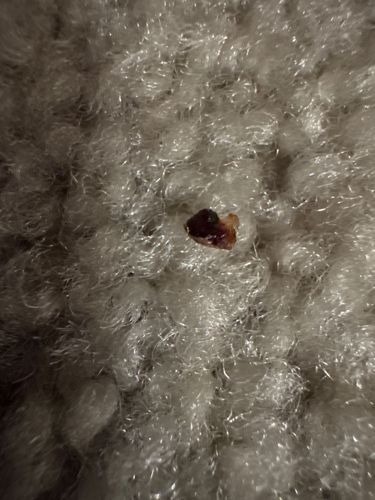Flea
Scientific Name: Ctenocephalides felis (cat flea, most common species on dogs and cats), Pulex irritans (human flea), etc. (specific identification to species level is not possible from the image alone)
Order & Family: Siphonaptera (order); Pulicidae (most common family for species affecting humans and pets)
Size: Typically 1.5 to 3.3 mm (0.06 to 0.13 inches) in length.

Natural Habitat
Fleas are found globally in various environments where their hosts reside. This includes homes (carpets, bedding, upholstered furniture), kennels, yards, and wild animal dens. The image, showing the specimen on what appears to be carpet, is consistent with flea habitat.
Diet & Feeding
Strictly hematophagous, meaning adult fleas feed exclusively on the blood of their mammalian and avian hosts.
Behavior Patterns
Fleas are ectoparasites, meaning they live on the outside of their hosts and feed on blood. They are highly agile, capable of jumping long distances (up to 200 times their body length) to find new hosts. Their life cycle includes egg, larva, pupa, and adult stages, with adults typically remaining on the host. Females lay eggs after a blood meal, and larvae feed on organic debris, including adult flea feces, in carpets, bedding, and cracks.
Risks & Benefits
Risks: Fleas are significant pests. Their bites cause itchy red spots, leading to discomfort, skin irritation, and allergic reactions (flea allergy dermatitis) in susceptible individuals and pets. They can also transmit diseases, including Bartonellosis ("cat scratch disease"), murine typhus, and are known vectors for the bubonic plague (Yersinia pestis) in historical contexts. They also serve as intermediate hosts for tapeworms (e.g., Dipylidium caninum). Benefits: In most ecological contexts, fleas are considered pests with no significant beneficial role to humans, although they are a food source for some predators.
Identified on: 9/4/2025